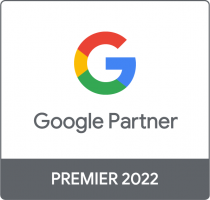5 Psychological Tactics to Apply in Your Business
Sinem Ibrahim, Operations Manager
20 March 2015
Psychology is an essential tool to have in your kit when it comes to marketing. Most people use some of these ideas because they’ve seen them in action in other places and consciously (or more often, unconsciously) applied them to their business.
I’ve outlined 5 different Psychological approaches you can use to grow your business. You may find all 5 easy to implement, or maybe just one fits you, but these are proven techniques to build and keep your customers.
1) Reciprocity
People respond to much better to acts of kindness. The whole idea or reciprocity is that people will reward kind actions and punish unkind ones.
Research in 2002, showed how waiters could increase their tips just by making people fell like they were getting something extra from the waiter.
Tips went up 3 precent when diners were given an after-dinner mint. Who doesn’t like mints? But… Tips went up 20 precent if, while delivering the mint, the server paused, looked the customers in the eye, and then gave them a second mint saying something like “this one is extra, just for you!”.
By giving people something of value, they will reward you in kind. If you can give something to your customers (that has perceived value) you’ll see returns in the long run.
Photo via Unsplash
2) Social Proof & Conformity
Social Proof is simply people doing what they see others doing. People mimic what they see others doing, and you can latch on to this.
We change how we behave to be more like others. For example if you start at a new workplace, and the majority of the employees work long hours, and often leave work late. You’re also more likely to start working long hours and leave work later.
So how do you encourage social proof & conformity in your business?
Invite appropriate key influences, such as bloggers or media personalties to engage in your product or service. Don’ be afraid to extend the invitation to industry leaders as well. If they have a positive experience your business then gets exposed to their entire sphere of influence, increasing your social proof and making it easy for people to engage in your business since those they look to for social proof have endorsed you.
3) Scarcity
Scarcity is the perception of an item to be more attractive if it’s limited in some way. We’re much more likely to buy something if it’s the last one available or it’s the last day of a special sale. And how good does it feel to get the last ticket at the movies or pluck the last bar of chocolate on the shelf? In other words, scarcity is the fear of missing out (or FOMO if you like acronyms). Wiki Scarcity here.
Scarcity also lends itself to increased social proof (above). Everyone else looks like they’ve already taken advantage of the sale or already has the product – I better do the same! And it helps increase the perceived value of the product too!
“I’m a custom quote Lorem ipsum dolor sit amet, consectetuer adipiscing elit. Duis leo fringilla mauris sit amet nibh”
4) Foot in the door method
Those who commit to a smaller offer are more likely to commit to another, larger offer. Essentially you give someone a taste, and they come back for the whole thing. And then later they’re likely to want even more.
Out of your existing customers, those who are more engage with your brand and content i.e click on a link in an email, are more likely to comply with a larger request. That large request may be something as simple as sharing your content on social media or buying the next stage of your product.
A great way to apply this in your business is have a small offer (or even a free one) that people can easily afford. It lets customers try your product or even your brand, and preps them for a bigger sale. If they like the experience, they may just have their wallets open before you even ask.
Photo via Unsplash
5) Framing effect
People react differently depending on how information is framed. Is this going to be seen as a loss of something or are you going to gain something new. And a lot of this feeling is influenced by the mood or tone of your language.
By framing the language of your sales page or e-mails in a positive light, it makes it easier for your customer to see a clear gain. The idea here is to show people what they are moving to, that they are growing by engaging with your business.
Using a negative tone, or focusing on the fear of loss can be productive in the short term, but it then becomes more difficult to continue that discourse in future sales and offers.
Not all of these ideas will be applicable to your business, but if you can find ways to implement even one – you’ll notice the results
Want new articles before they get published?
Subscribe to our Awesome Newsletter.








